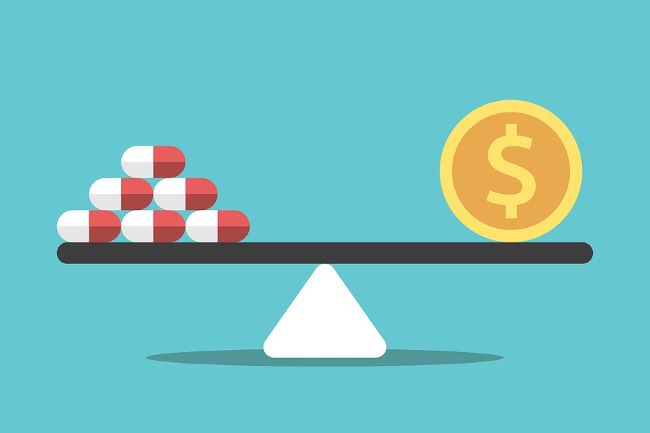A prescription drug plan doesn’t do you much good if you can’t afford your copays. Unfortunately, this is the situation in which many seniors find themselves. Some of your Medicare clients may be having trouble paying for their prescription medicines. By helping them find strategies to cover costs, you can also help them find value in their coverage.
Life-Saving Prescriptions Are Going Unfilled
Imagine that you’re a senior on a fixed budget. Your doctor prescribes a medication to treat a serious, possibly life-threatening condition, but when you go to the pharmacy, you find out that it costs hundreds of dollars. That’s your entire monthly budget for food and medicine. Now you have a choice. You can either fill the prescription and not have any money left for food, or you can forgo the prescription and buy your groceries as usual.
Many seniors find themselves in this situation, and they often choose to go without medication. According to research published in Health Affairs, Medicare beneficiaries without low-income subsidies failed to fill 30% of prescriptions for anticancer drugs, 22% of prescriptions for hepatitis C treatments, and more than 50% of prescriptions for disease-modifying therapies for immune system disorders or hypercholesterolemia.
Many People Have Trouble Affording Prescriptions
A survey from GoodRx found that 40% of people had a hard time affording medications in 2021, and 25% of people had difficulty affording basic necessities due to high medication costs. In order to save money, 16% of people delayed refilling their prescription after they ran out of medication, 16% rationed their medication and 10% stopped taking their medications entirely.
Prescription medications can be very expensive in the U.S., and this can be true even for people with Medicare and other forms of insurance. Most prescription drug plans use formularies, and drugs that are not on the formulary may not be covered. Plans also often use tiers of drugs with different costs, and drugs in the highest tiers can have expensive copays.
In some cases, people may end up paying more for prescriptions with insurance than they would if they purchased the prescription without coverage. This happens when the copay for the tier is greater than the cost of the prescription. According to research from the University of Southern California, these overpayments have even been found in Medicare Part D plans despite rules against overpayments.
Helping Your Clients Afford Their Medications
Prescription affordability is a serious problem for many seniors, and there’s a good chance that some of your Medicare clients have struggled to afford one or more of their prescriptions. By helping them find strategies to afford their medications, you can help them stay healthy while demonstrating your value and encouraging plan retention. Here are some strategies that can help.
- Encourage your clients to apply for low-income subsidies. The Extra Help program helps with premiums, deductibles and copays, and the Social Security Administration says that it’s worth about $5,100 per year. Even if your clients aren’t sure whether they’ll qualify, if they’re having trouble with costs, it doesn’t hurt to apply. It is possible to qualify for partial Extra Help subsidies.
- Shop around for the best Medicare plan for your each clients’ needs. Compare drug formularies and out-of-pocket costs for specific medications before settling on a plan.
- Educate your clients about what to expect in the four coverage stages of Medicare Part D.
-
- The deductible period: Until they meet their Part D deductible, they will pay the full cost of prescriptions. If their plan has a $0 deductible, they immediately advance to stage 2.
- Initial coverage: Once the deductible is satisfied, the plan pays for a portion of every prescription drug purchased, if the medication is part of the plan’s formulary. The percentage paid will be based on the plan’s tier levels. Initial coverage continues until they hit the coverage limit set by Medicare for the year. In 2022, that limit is $4,430.
- The coverage gap (donut hole): If they exceed the annual coverage limit, they will pay 25% of the plan’s cost for covered brand name and generic drugs until they reach the out-of-pocket limit for the year, which is $7,050 in 2022.
- Catastrophic coverage: If they exceed the out-of-pocket limit, the plan and the government pay the majority of the remaining cost until the end of the plan year.
- Tell them there are other options for filling prescriptions. Depending on the specific drug needed, it may be most cost-effective to use an alternative to Medicare coverage for a particular prescription. For example, GoodRx says that their program cannot be used in conjunction with Medicare, but it can be used in place of Medicare and may save money in some cases. Another option to explore is the Mark Cuban Cost Plus Drug Company, an online pharmacy that doesn’t accept insurance but cuts out the middleman and uses transparent pricing to provide more affordable prescriptions. According to Becker’s Hospital Review, Medicare recipients could have saved as much as $3.6 billion on generic drugs in 2020 if Medicare paid the same prices as Cost Plus Drug.
If your clients choose to pay for prescriptions outside of Medicare, it’s important they understand that the costs they incur will not apply to the four stages of Part D discussed above.
- Encourage your clients to discuss issues with their doctor. Many patients don’t discuss money issues with their doctor, but this can be a problem when patients aren’t getting the treatments they need because of costs. If your clients can’t afford to fill a prescription or feel they need to ration their medicine, they should tell their doctor, who might be able to prescribe a less expensive alternative or offer advice.
Helping your Medicare clients afford their prescription costs is a great way to show your value. It’s especially important this year, as many seniors struggle with the rising cost of groceries, gas and other inflationary impacts.
If you have any questions, please reach out to us.
